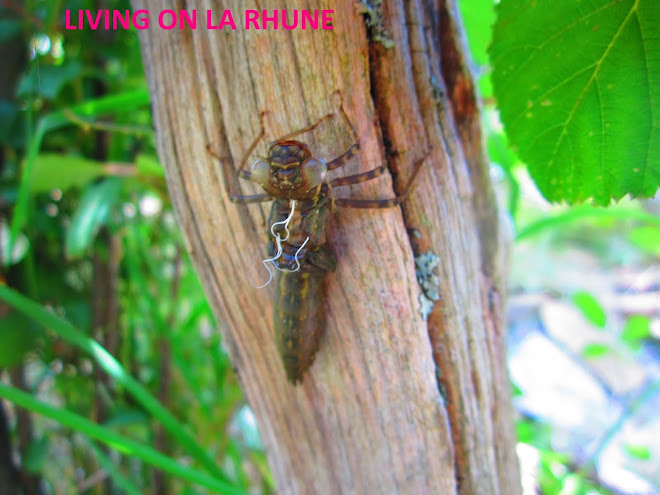This is the season of bruyere and sunshine that drips like honey over LaRhune, the mountain's deep scars covered by green fougere ferns. The hum of the honeybee and the gurgle of the stream replace the angry roar of the vent du sud. This is the easy season where birds feast on wild cherries, tadpoles grow legs and sing in the evening. Even humans relax and smile; the old Basques wave as they pass my bergerie on tractors.
And yet I am disquiet. Child of trauma, I am most alive in trauma: fires to be extinguished, floodwaters rising, the call to arms. One reason I came to the mountain was to learn to sit in quiet. I am still learning.
In the shade of my red oak, I try to develop chapter 8 of my new novel in a spiral notebook. The work is painful, written in my own blood. It is slow going, the only enemies to battle my own memories.
Of course summer in southwestern France is not without some drama: swarming honey bees in the living room, a pottok trapped on her back by the tuya, some doctor from Bordeaux racing up the mountain in a four-by-four rescued by the pompiers. And even when life is calm, conflicts are possible for those with imagination.
 I leave the notebook in the shade to attack the fougere. The tall eagle ferns cover the slope around my house, so thick and strong in summer that pottoks can hide in them. Each summer I beat the ferns back with a debrossailleuse to let the wildflowers grow.
I leave the notebook in the shade to attack the fougere. The tall eagle ferns cover the slope around my house, so thick and strong in summer that pottoks can hide in them. Each summer I beat the ferns back with a debrossailleuse to let the wildflowers grow. It is a fun diversion from the pain of writing. As I whack down fougere, I pretend I am battling enemies. They are nameless now; the long revenge list I brought with me to the mountain two decades ago has been leached out of me by LaRhune's patient tutorage. I leave them to karma now: the treacherous family of origin (a little more than kin but less than kind); the demanding lovers; the unscrupulous colleagues. Instead, my weed-whacker takes out less personal enemies: drivers who target hedgehogs on Basque Country backroads; the idiots who butchered a magnificent platane tree near town after a drunken buddy plowed into it on his motorcycle; the hiker who removed the little crutch I had fashioned for an unsteady tree to use as a staff. Walking away from these are part of an advanced course I have only just begun.
As if to remind me "be here now," fate sends me whacking near a wasp's nest and I end up rolling down the slope to escape their fury. As I walk back toward the house past my tadpole pond, I see a large dried bug halfway up a wooden post. A similar bug stands triumphantly on the first one's back like a conquering hero. I feel sad for the vanquished before I understand: it is no bug. It is the larva of a dragonfly that developed in the pond and, that July morning, crawled up the post to split open its own body and step out, moving on to complete its destiny. Did it hurt, I wonder, to rip itself apart, to step out of its past leaving an old self behind? Always, comes the answer: it always hurts to grow.
My notebook still lies beneath the red oak. I sit back down, pick up my pen and begin the real work.








